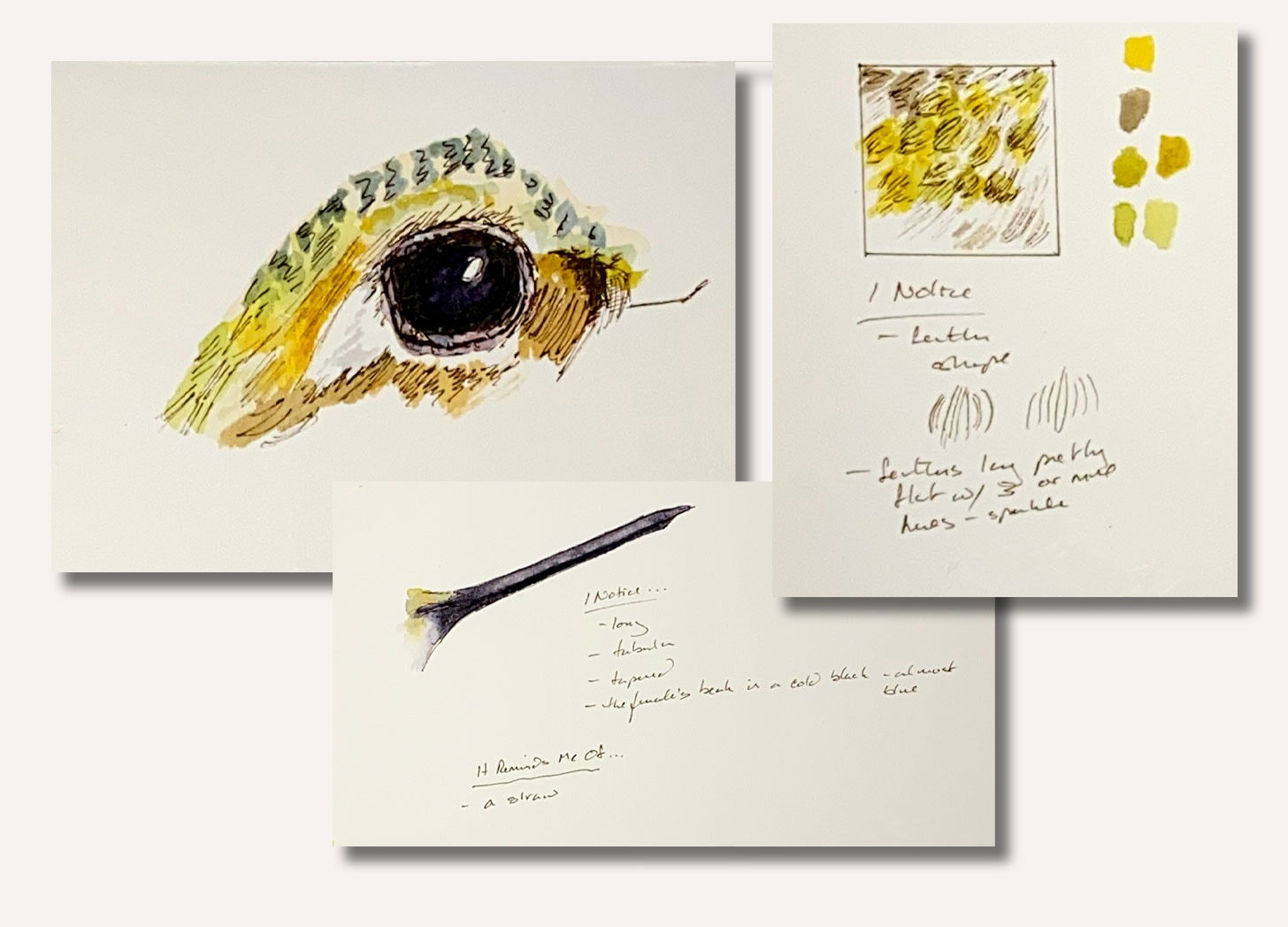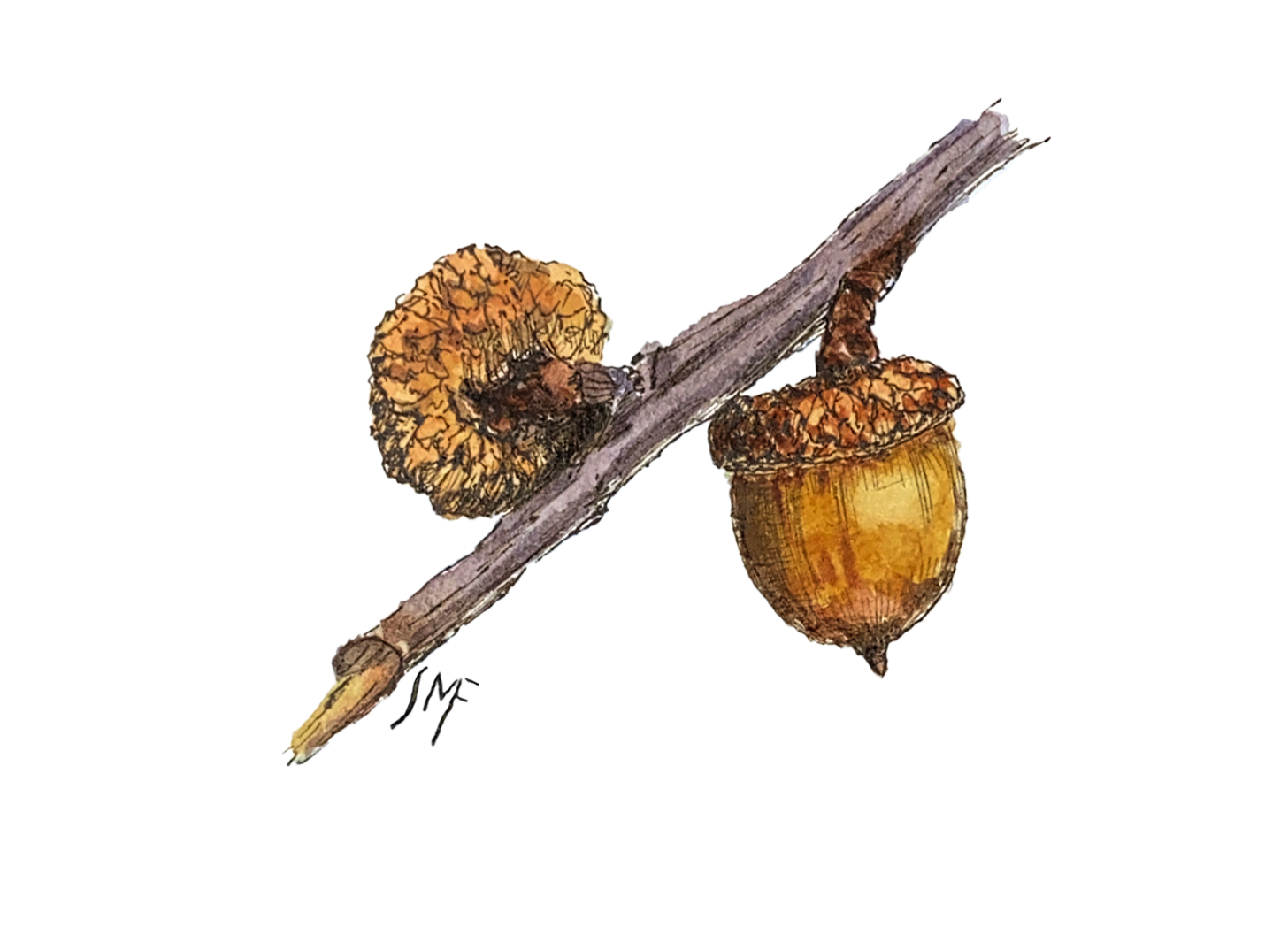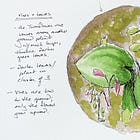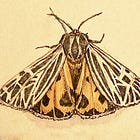Weekly Prompt No. 22: Dissection — Creating A Study Page
Let's put aside preconceived notions about drawing and art to focus on its use to closely observe our subject.

Hello, friends!
Something that has helped me improve my observation and translation skills is dissection, and by that I mean on the page using drawing as a way to separate and explore. Breaking down a subject into smaller bits of study improves understanding. The bonus: If your drawing skills are tenuous, they will improve over time.
Leonardo Da Vinci, John Ruskin, and Beatrix Potter, among others, used drawing as a tool to observe, record, and understand. Ruskin, a 19th century art critic and patron of the original incarnation of the Pre-Raphaelite Brotherhood, believed that drawing was part of an informed life and good for everybody. I agree!
As I alluded to in my recent newsletter, I’m working on bird drawings and paintings for an exhibit in November. Although I’ve illustrated many birds, every new piece is a discovery of bird anatomy, feathers, patterns, textures — all the things I notice — and raises questions and thoughts to explore (wonder). It’s so helpful in my nature journal to separate parts of the bird — wings, legs, beaks, individual feathers, etc. These entries become reference for not only my formal work, but also a catalog to refer to when I’m out in the field to remind me of previous discoveries and helps me form a holistic picture of my environment. (Did you see how I slipped in I Notice, I Wonder, It Reminds Me Of…? Yeah, I’m tricky that way…)
You can use this technique for all of your nature observations. This week’s prompt will show you the process I use, but please adapt it to what works best for you.
Prompt
You don’t need much for this prompt, just a pencil or pen, paper, a subject, and the willingness to kick your inner critic to the curb. Of course, if you want to expand your kit to include color, please do so. Whatever helps your visual note-taking!
3-Step Dissection (on the page)
Choose a subject - field work is awesome, but feel free to work from reference photos, too. I often work from a combination of the two.
Look at your subject as a whole. This is a good time to implement the INIWIRMO framework, and write down what you notice.
Now look at what you wrote in Step 2 and choose something to observe more closely. Zoom in and make sketches, write down notes (INIWIRMO, again), make a diagram — again do whatever supports making visual notes.
When you are finished move on to another entry from your initial “I Notice” list and repeat or if something else caught your attention while you were completing Step 3, follow that.
I spent an hour today “learning” this female Ruby-throated Hummingbird, and will continue working in my nature journal over the weekend from some reference photos I took last summer. The Rubys are a frequent visitor to my Hydrangea bush from June through August. The video below is a scant 14 minutes (sped up from an hour), with some text but no voiceover or music. Enjoy!
Let me know how you get on and any questions you have!
xoSusannah
P.S. If you are around, join me for the Wonder-filled Wednesday live session on Substack Notes at 1:30pm Eastern US Time beginning January 8. You can read more about it here.
P.P.S. In case you are curious about the supplies I used they are a 005 Sepia Micron pen, Daniel Smith Watercolors (Quinacridone Gold, Quinacridone Rose, French Ultramarine, and Moonglow — however I think I may have had some Hansa Yellow Medium on my palette, which gave me a brighter green), and Pentel Aquash water brushes. You’ll notice I never clean my palette, and just mix into what’s already there. With such a limited palette it’s easy to adjust colors, although to be honest my big studio palette with more colors looks like this most of the time, too. 😝
Related Prompts
Thank You So Much For Your Continuing Support!
Do you know of someone who would like a gift subscription? Cricklewood Nature Journal is a lovely gift for the nature and art lovers in your life.
Are you getting a group of nature journalers together?
I’m so pleased to offer group subscriptions! Gather 5 or more in your group and take advantage of 15% off each seat in an annual subscription now and for the entire time your group chooses to stay paid subscribers.
Other ways to support my work
Consider hiring me for illustration or purchase original art.
Or if you’d rather buy art supplies for my studio here.
Sharing this newsletter, commenting on posts, and engaging with my posts on Notes (in the App) are all fine ways of supporting my work.







This is great Susannah! When I see your anatomical sketches, I always think about Darwin and Mendel and Humboldt and their specimen collections and notebooks. For many centuries, "science" was about close observation and recording. Even with the experimental method, good observation skills are key to making important discoveries. I wrote about teaching children observation skills and science here:
https://bairdbrightman.substack.com/p/were-not-teaching-our-children-real